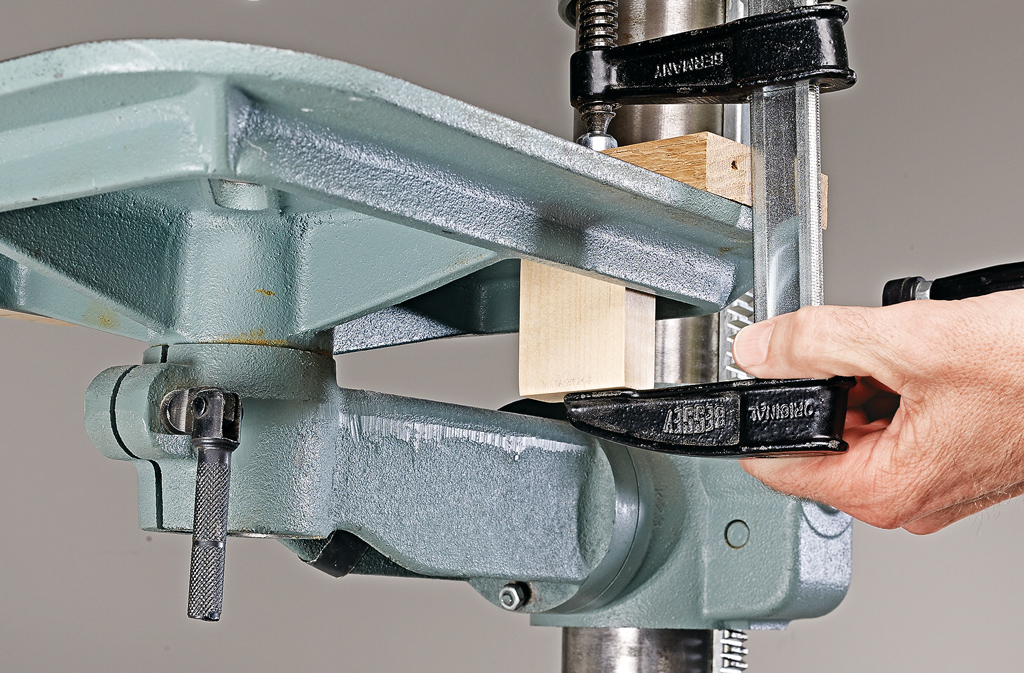Download the FREE, step-by-step plans to make Dovetail Keys from WoodsmithPlans.com.
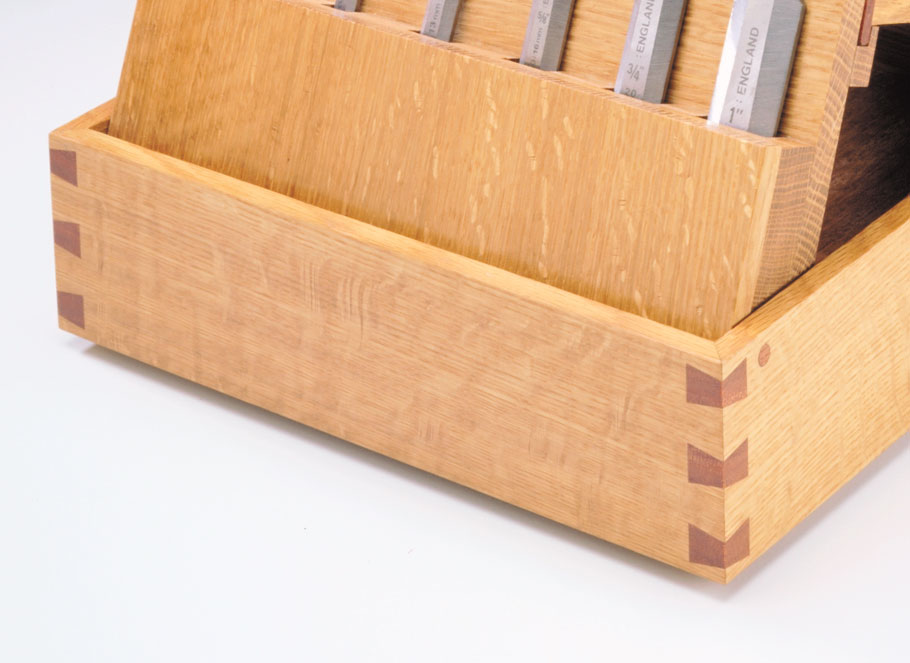
If you take a quick glance at the photo above, it may appear that the box is held together with traditional dovetail joints. But a closer look will reveal that the pieces are actually mitered. You’ll also notice that there are dovetail-shaped “keys” (splines) running across the miter.
STRENGTH. One big advantage of these keys is that they help strengthen the miter joint. That’s because they’re glued into slots that are routed across the miter. This creates a stronger glue joint than the end grain surfaces of the mitered pieces.
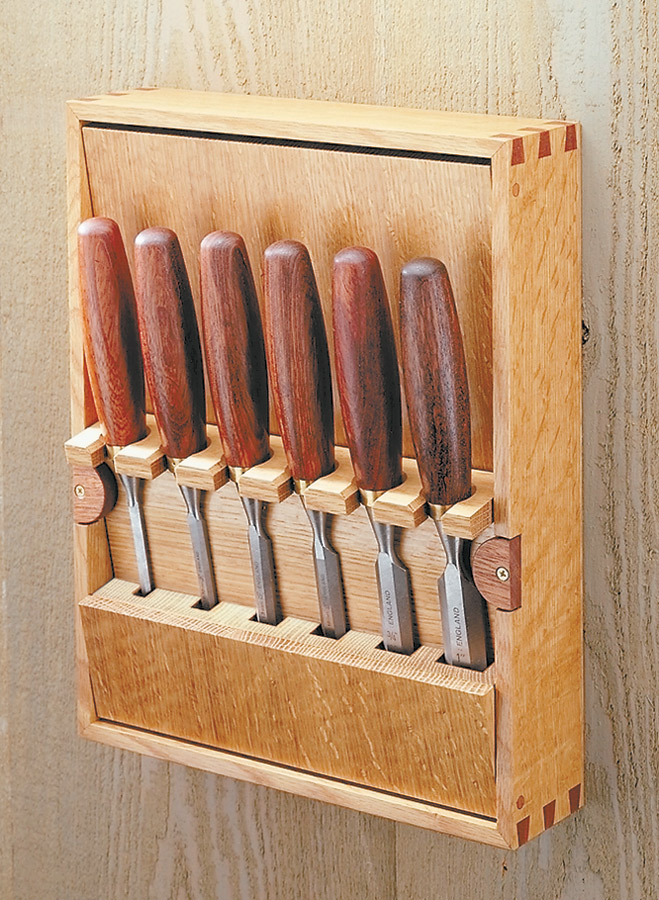
CONTRAST. In addition to providing extra strength, the wood keys also produce a striking contrast just like traditional dovetail joints. The mahogany keys pictured above contrast with the oak sides of this chisel case.
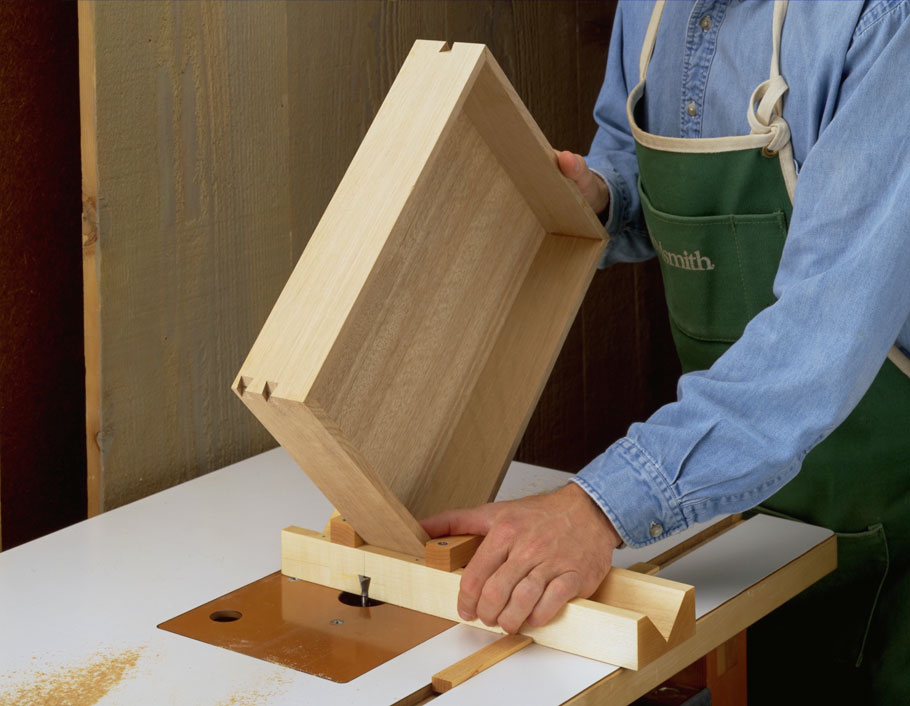
SLOTS. Although adding dovetail keys to a box looks like it might be complicated, that’s really not the case. Basically, it’s just a simple, two-part process. First, the slots are routed across the miter joints using a dovetail bit and a “cradle” to hold the box steady. Second, the keys are cut to fit the slots.
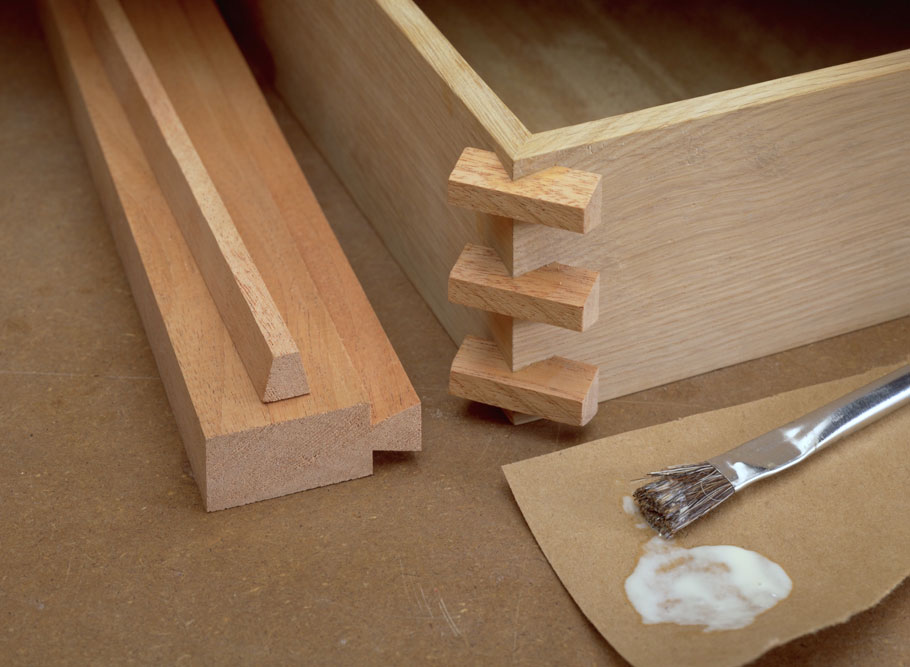
KEYS. Once the slots are completed, it’s just a matter of adding the dovetail keys. You can make the keys with the same dovetail bit you used to rout the slots. Since the dovetail keys are quite small, it’s best to start with a long, extra-wide blank. The goal is to rout dovetail-shaped strips that fit tightly in the slot. The best way to do that is with the 4 steps shown below.

With this simple process you can be building strong, beautiful mitered boxes and cases in no time. Download the complete step-by-step article on Dovetail Keys at WoodsmithPlans.com and get started today.









